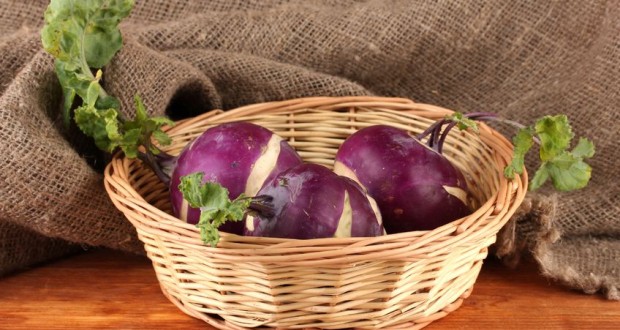You don’t have to be a health nut to know healthy foods when you see them. If asked to name some nutritious foods of the top of their head, your typical shopper could list quite a few items, such as apples, oranges, celery, carrots, skim milk and so forth. Sure enough, these supermarket staples form the cornerstones of a balanced and nourishing diet, and are well-deserving of their sterling reputations.
As healthy as these common foods are, they are not everyone’s cup of tea. For some consumers, eating the same relatively small number of foods may become rather tedious. Other grocery store patrons may have never cared for these products to begin with. In either case, shoppers don’t have to turn to junk food in order to try something new. Though you might have to look a bit harder for them, there are many overlooked supermarket items that are worth adding to your diet.
Sauerkraut – Sauerkraut’s name alone is often enough to scare off consumers. In addition, a good number of shoppers have no idea what sauerkraut actually is. This German import is simply cabbage that has undergone fermentation, a process in which carbohydrates inside a food or beverage are converted into acids. In the case of sauerkraut, the cabbage leaves morph from soft and flexible to crisp and crunchy. The fermentation process also leaves the cabbage with a distinctly sour taste (sauerkraut literally translates into “sour cabbage”).
Like its original form, sauerkraut’s low fat content makes it useful to those seeking to lose weight. This vegetable also bolsters your immune system, as it is positively brimming with Vitamin C. A single cup contains 35% of the recommended daily value (DV) of this disease-fighting nutrient. Eating sauerkraut is also a great way to get vitamin K and fiber into your body.
Turnips – A quick glance at the nutritional content of turnips reveals some impressive traits. Like sauerkraut, a 1 cup serving of turnip is high in both vitamin C (30% DV) and fiber (12% DV), and contains little in the way of fat (1 gram) and calories (a mere 57). The bad news is that turnips have a reputation for tasting fairly bitter. This isn’t an insurmountable obstacle; turnips that have been peeled and boiled, and then seasoned with olive oil, salt and pepper can have a rather pleasing taste.
Mustard Greens – Here’s another veggie that has been burdened with an unfortunate name. As unappealing as “mustard greens” may sound, it is still better than the scientific name of this vegetable – brassica juncea. Furthermore, the mustard greens moniker is actually a relatively accurate description of this product’s taste, which is strikingly similar to that of Dijon mustard.
While you may or may not like the spicy taste of mustard greens, this veggie’s nutritional résumé speaks for itself. One cup of raw mustard greens features 65% DV of vitamin C, an eye-popping 118% DV of vitamin A and an even more impressive 348% DV of vitamin K. As a nice little bonus, mustard greens are also solid sources of folate (26% DV in one cup) and manganese (13% DV).
Black Pepper – As you no doubt have noticed, every item on this list is choked full of essential nutrients. Only black pepper, however, can brag about once being used as money. Yes, you read that correctly – from Ancient Greece up through the Middle Ages, black pepper was often used to purchase other goods. In fact, it could purchase quite a few of them. Black Pepper was such a valuable commodity that rich medieval families used it to measure their wealth.
Though you aren’t able to buy a new laptop or mobile phone with black pepper in modern times, the nutritional value of this spice has fully survived the passage of time. Black pepper features a chemical known as piperine, which assists the body in alleviating pain. Piperine also enables the body to produce a greater amount of digestive enzymes, which can prevent such unpleasant digestive problems as heartburn, excess gas and indigestion.
People who are overweight could also stand to benefit from including black pepper in their diets. According to a report published in the Journal of Agricultural and Food Chemistry, black pepper disrupts the production of new fat cells, thereby preventing the formation of body fat.
Last, but certainly not least, black pepper functions as sort of a natural antibiotic. Once inside the body, black pepper can attack and destroy harmful bacteria. Research has found that black pepper’s antibacterial properties are highest immediately after it has been grounded, so it may be best to purchase ungrounded black pepper if possible.
Onions – Perhaps the most well known characteristic of onions is their propensity to induce tears when cut. While this reaction is certainly amusing, it tends to overshadow the more important facts about this sphere-like veggie. By eating a cup of chopped, raw onions, your body is provided with 20% of the vitamin C, 10% of the manganese, 10% the vitamin B6 and 11 percent of the fiber it needs daily.
Despite its high content of essential nutrients, the marketability of onions is hurt by their notoriously bitter taste. This doesn’t mean that you have to choke down foul-tasting onion pieces to enjoy this veggie’s benefits. Onions can be made much more palatable to the taste buds with the aid of just salt, water, a bowl and a kitchen strainer.
Simply place your onion slices in a ball of water, and mix in two tablespoons of salt. After letting the onions sit for five minutes, empty the bowl’s contents onto the strainer. The surface of the strainer will allow the water to pass through into the sink while supporting the onion pieces. Before taking the onion slices off the strainer, rinse them one more time with unsalted water. Your onion pieces should now be ready to eat.
Sesame Seeds – It’s easy to dismiss sesame seeds as little more than a bagel topping. Though they are far from impressive in terms of appearance, sesame seeds can make a profound impact on your health. The diminutive sized sesame seed houses a large number of vitamins and minerals, such as fiber, manganese, calcium, iron and zinc. Not impressed? Well, consider that just one ounce of sesame seeds offers 16% DV of dietary fiber, 23% DV of iron, 15% DV of thiamin, 11% DV of vitamin B6 and 35% DV of copper. It should be fairly easy to fit sesame seeds into your diet; they can be spread on top of salads, pasta, and various types of meat.
 Natural Knowledge 24/7 Educate yourself with nutrition, health and fitness knowledge.
Natural Knowledge 24/7 Educate yourself with nutrition, health and fitness knowledge.






